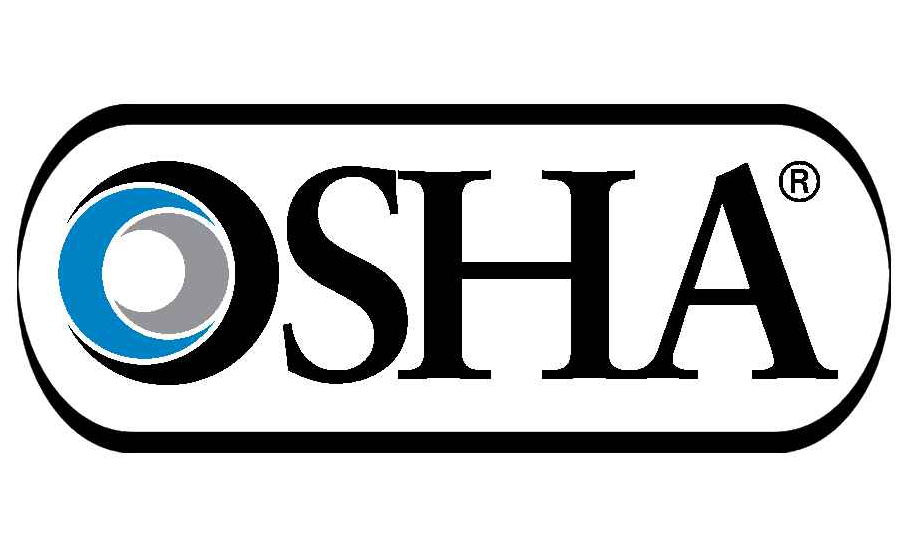
In today’s business environment, prioritizing workplace safety is of paramount importance. Employers are responsible not only for the well-being of their employees but also for compliance with regulatory standards. One of these important requirements is OSHA compliance. Established by the Occupational Safety and Health Act of 1970, OSHA sets guidelines and regulations to ensure safe and healthy working conditions for employees in various industries. By complying with OSHA requirements, companies demonstrate their commitment to providing a safe work environment and protecting the well-being of their employees.
What is OSHA Compliant?
OSHA compliance refers to the act of adhering to the guidelines and regulations set forth by the Occupational Safety and Health Administration (OSHA). OSHA is a federal agency in the United States that is responsible for ensuring safe and healthy working conditions for employees. Being OSHA compliant means implementing the necessary safety measures and protocols in the workplace to meet or exceed OSHA’s standards.
To achieve OSHA compliance, employers must assess their workplace for potential hazards, develop and implement safety programs and procedures, provide proper training to employees, and maintain accurate records of safety-related activities. Compliance with OSHA regulations includes various aspects such as hazard communication, recordkeeping and reporting, safety training, personal protective equipment (PPE), equipment protection, fall protection, and emergency preparedness.
By being OSHA compliant, employers demonstrate their commitment to providing a safe work environment and protecting the well-being of their employees. Compliance not only helps prevent workplace accidents, injuries, and illnesses but also reduces the risk of legal consequences and financial penalties that may arise from non-compliance with OSHA regulations.
Some key aspects of OSHA compliant include:
- Hazard communication: OSHA requires employers to inform and train employees about potential hazards present in the workplace. This includes providing safety data sheets (SDSs), labels, and other necessary information about hazardous chemicals.
- Recordkeeping and reporting: Employers must keep accurate records of workplace injuries, illnesses, and fatalities. They are required to report serious injuries, hospitalizations, and fatalities to OSHA within a certain time frame.
- Safety training: Employers must provide comprehensive training to employees on specific safety procedures, equipment use, emergency response plans, and any other relevant topics based on the nature of their work. Such training should be conducted regularly and updated as necessary.
- Personal protective equipment (PPE): OSHA regulations require employers to assess workplace hazards and provide employees with appropriate personal protective equipment, such as goggles, gloves, helmets, or respirators, to protect against specific risks.
- Protection of equipment: Employers should ensure that machinery and equipment are adequately protected to prevent accidents and injuries. This includes installing barriers, shiel, ds, or other protective devices to prevent contact with moving parts or hazardous areas.
- Fall protection: OSHA pays great attention to fall protection because falls are the leading cause of workplace fatalities. Employers must take steps to protect employees from falls, such as installing guardrails, safety nets, or personal fall arrest systems when working at heights
- Emergency preparedness: Employers must develop and implement emergency action plans that outline procedures to follow in the event of fires, natural disasters, chemical spills, or other emergencies, as required by OSHA. To ensure employee preparedness, it is important to conduct regular training and drills.
Failure to comply with OSHA requirements can result in severe penalties, including fines and potential lawsuits. By prioritizing OSHA compliance, employers demonstrate their commitment to the safety and well-being of their employees while creating a positive work environment. It is important to stay up-to-date with the latest OSHA standards and ensure ongoing compliance to protect the health and safety of all employees.

How Does OSHA Enforce Regulations and Measure Compliant?
OSHA enforces its rules and measures compliance through inspections, investigations, and fines. OSHA inspectors visit workplaces to assess compliance with safety and health regulations through inspections. These inspections can be either planned, targeting high-risk industries or workplaces, or initiated by employee complaints or accident reports.
During inspections, compliance officers assess the workplace for potential hazards, review the implementation of safety protocols, and review records and documentation related to safety training, accident reports, and documentation required by OSHA. They may interview employees and management to gather information about safety practices and identify any potential violations. OSHA enforces its rules and measures compliance through inspections, investigations, and fines.
Here’s an overview of how OSHA enforces the rules:
#1 Inspections
OSHA conducts inspections to make sure employers are following safety and health rules. Inspections may be conducted in response to complaints, referrals, or as part of routine inspections targeting high-risk industries. OSHA inspectors visit workplaces to assess potential hazards, evaluate safety practices, and determine whether employers are meeting required standards.
#2 Investigating complaints and incidents
OSHA investigates complaints filed by employees or their representatives regarding unsafe working conditions or violations of OSHA standards. In addition, if a serious injury, illness, or fatality occurs in the workplace, OSHA may initiate an investigation to determine the cause and potential safety violations.
#3 Recordkeeping
Employers are required to keep records of workplace injuries and illnesses, called OSHA 300 logs. OSHA may review these records during inspections or investigations to assess an employer’s compliance with reporting requirements.
#4 Observations and penalties
If OSHA finds a violation during an inspection or investigation, it may issue a citation to the employer. The citation specifies the nature of the violation and the necessary corrective actions. Fines can also be imposed depending on the severity of the violation and the employer’s compliance history. Fines serve as a deterrent and encourage employers to address safety hazards quickly.
#5 Follow-up inspections
OSHA may conduct follow-up inspections after issuing citations to ensure that they have corrected the identified violations and that the employer complies with the set standards. Failure to correct identified hazards may result in further penalties or legal action.
#6 Outreach and education
In addition to enforcement activities, OSHA emphasizes outreach and education to promote voluntary compliance with safety regulations. OSHA provides training, educational materials, and resources to help employers and employees understand their rights and responsibilities. This proactive approach is aimed at preventing workplace hazards and encouraging employers to take proactive safety measures.
What are the OSHA Standards?
OSHA standards establish the minimum safety requirements that employers must follow to protect their employees from workplace hazards. These standards are mandated by Congress through the Occupational Safety and Health Act and apply to most private-sector employers and their employees in all 50 states.
While OSHA sets national standards, it encourages individual states to establish and enforce their own health and safety regulations. There are currently 22 state plans in place. These plans must meet or exceed OSHA standards to provide effective worker protection and prevent work-related injuries, illnesses, and fatalities. OSHA’s comprehensive standards can be found in Title 29 of the Code of Federal Regulations (CFR). While certain sections of the regulations are industry-specific, such as those for construction and agriculture, most employers are subject to OSHA’s “general industry” regulations found in 29 CFR Part 1910. These regulations cover a wide range of issues, including hazard communication, personal protective equipment, electrical safety, machine guarding, and more.
In addition to complying with specific standards, all employers have a general duty, as outlined in OSHA’s General Duty Clause, to provide their employees with a work environment free from hazards. This provision requires employers to identify and correct known hazards that have the potential to cause serious injury or death, even if no specific OSHA standard directly addresses those hazards.
Managers and employers should have a thorough understanding of the applicable OSHA standards that apply to their industry. They must regularly review and comply with the specific regulations that apply to their business operations.

How to become OSHA Compliant?
Achieving OSHA compliance is a critical responsibility for employers to ensure the safety and well-being of their employees. By following specific guidelines and implementing necessary safety measures, businesses can create a workplace environment that meets or exceeds OSHA standards.
Here are the key steps to becoming OSHA compliant:
- Understand OSHA Regulations: Begin by familiarizing yourself with the OSHA regulations that apply to your industry. OSHA provides guidelines and standards specific to various workplace hazards and operations. Review these regulations to gain a comprehensive understanding of the requirements that pertain to your business.
- Conduct a Workplace Assessment: Perform a thorough assessment of your workplace to identify potential hazards. This assessment should encompass all areas, such as machinery, equipment, chemicals, ergonomics, and electrical systems. Identify any risks that may compromise employee safety and health.
- Develop a Safety Program: Establish a comprehensive safety program tailored to your workplace. This program should include policies and procedures for hazard prevention, incident reporting, employee training, emergency response, and more. Ensure that your program aligns with OSHA requirements and covers all relevant aspects.
- Provide Employee Training: Ensure that all employees receive thorough safety training. Train them on hazard recognition, safe work practices, proper use of personal protective equipment (PPE), emergency procedures, and any specific OSHA requirements relevant to their roles. Regularly reinforce training to maintain awareness and compliance.
- Maintain Accurate Records: Keep detailed records of safety training, inspections, incident reports, and other required documentation. OSHA may request these records during inspections to assess compliance. Maintaining accurate records demonstrates your commitment to OSHA compliance and aids in identifying areas for improvement.
Now that you have an understanding of the initial steps involved in becoming OSHA compliant, it’s important to remember that achieving compliance is an ongoing process. Continuously monitor and update your safety program, stay informed about changes to regulations, conduct regular inspections, and involve employees in the safety process. By following these steps, you can create a safer work environment, protect your employees, and avoid penalties for non-compliance with OSHA regulations.
Benefits of OSHA Compliant
Becoming OSHA-compliant offers numerous benefits to both employers and employees. t not only helps in reducing workplace accidents and injuries but also contributes to a positive work culture, increased productivity, and enhanced employee morale. By prioritizing OSHA compliance, employers demonstrate their commitment to providing a safe and healthy work environment, which in turn attracts and retains top talent.
Improving employee safety
OSHA compliance puts the safety and well-being of employees first. By implementing OSHA safety rules and standards, employers can significantly reduce the risk of accidents, injuries, and illnesses in the workplace. This creates a safer work environment where employees can feel protected and confident in their duties.
OSHA compliance puts employee safety and well-being first. By implementing OSHA safety rules and standards, employers can significantly reduce the risk of accidents, injuries, and illnesses in the workplace. This creates a safer work environment where employees can feel protected and confident to perform their duties.
Reduced Financial Costs
Workplace accidents and injuries can result in significant financial costs for employers. By complying with OSHA standards, companies can minimize the risk of costly medical expenses, workers’ compensation, and legal liabilities. Prevention is often more cost-effective than remediation, making OSHA compliance a sound financial investment.
Increased Productivity
A safe and healthy work environment has a positive impact on employee morale and productivity. When employees feel safe in their workplace, they are more motivated, engaged, and focused on their tasks. OSHA compliance helps create a positive work culture that promotes productivity, teamwork, and employee satisfaction.
Improved Reputation and Competitive Advantage
OSHA compliance demonstrates an organization’s commitment to employee safety and well-being. This commitment can improve a company’s reputation with employees, customers, suppliers, and the public at large. A strong safety record can also provide a competitive advantage by attracting top talent and encouraging customer loyalty.
Legal Compliance
Failure to comply with OSHA regulations can lead to legal consequences, including fines, penalties, and potential lawsuits. By adhering to OSHA standards, employers reduce the risk of legal liability and demonstrate their commitment to regulatory compliance.
Improved Risk Management
OSHA compliance involves conducting regular workplace inspections, risk assessments, and implementing safety protocols. This proactive approach allows employers to identify and eliminate potential risks and hazards before they lead to accidents or injuries. Effective risk management helps to protect employees, assets, and business operations in general.
Positive Employee Relations
Prioritizing worker safety through OSHA compliance helps build trust and positive relationships between employers and employees. When employees see that their well-being is valued and protected, it fosters a sense of loyalty, commitment, and job satisfaction.
Conclusion
In conclusion, prioritizing OSHA compliance offers significant advantages for employers and employees alike. By adhering to OSHA regulations and implementing necessary safety measures, businesses create a safe and healthy work environment that protects employees from accidents, injuries, and illnesses. The benefits of OSHA compliance extend beyond workplace safety and include reduced financial costs, improved productivity, enhanced reputation, legal compliance, access to valuable resources, improved risk management, and positive employee relations.







